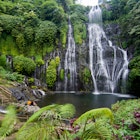
Jan 7, 2026 • 5 min read
Traditional medina homes have been transformed into boutique hotels across Morocco, giving visitors a taste of riad living.

Jan 7, 2026 • 5 min read
Traditional medina homes have been transformed into boutique hotels across Morocco, giving visitors a taste of riad living.

Jan 7, 2026 • 8 min read
Souqs (markets) are integral to daily life in Morocco. Shop, browse, bargain and explore with this guide.

Jan 7, 2026 • 6 min read
If a March trip to Ireland is a long shot, these St Patrick's Day parties, parades and celebrations are the next best thing.

Jan 7, 2026 • 6 min read
Panama is a destination offering a mix of cosmopolitan cities, secluded beaches and outdoor adventure. Here's how to see it and save.

Jan 7, 2026 • 8 min read
Seoul boasts one of the best public-transit networks in the world. Here are all the best ways to get around Seoul.

Jan 7, 2026 • 7 min read
Food in Thessaloniki blends Greek, Ottoman and Balkan influences, among others. Find the must-try favorites in this roundup of the city's specialities.

Jan 6, 2026 • 9 min read
Here's everything you need to know about visiting the Acropolis in Athens.

Jan 6, 2026 • 6 min read
From medialunas to limpets, here are eight things to try in Lima.

Jan 6, 2026 • 7 min read
Our pick of the best day trips from Stockholm are perfect for fans of history and the outdoors.

Jan 6, 2026 • 5 min read
With beaches in the high season, solitude in the low season, and hiking and wildlife watching in between, the best time to visit Indonesia is now.

Jan 6, 2026 • 11 min read
Some of Rome's best things to see and do can be experienced for free. Here's how.

Jan 6, 2026 • 6 min read
Rome has so much history and art to showcase that it requires about 250 dedicated institutions – start with these 8 of the top museums in Rome.

Jan 6, 2026 • 7 min read
This small fishing village attracts travelers from all over and is a firm favorite for locals too looking for a beach getaway.

Jan 6, 2026 • 6 min read
Malaga's streets buzz with life year round as more people discover its ancient sites, contemporary art museums, and bars and taverns.

Jan 5, 2026 • 7 min read
The expansive region is a veritable winter wonderland of stunning forests, epic natural phenomenon and Sámi culture – plus Santa's village.

Jan 5, 2026 • 5 min read
This walking tour through central Bogotá will take you past plazas, churches and other spots where Colombian history unfolded.

Jan 5, 2026 • 9 min read
Explore North America on these incredible trips to peaceful national parks, vibrant music-filled cities and fascinating ancient temples.

Jan 5, 2026 • 5 min read
Samhain celebrations have been a traditional part of Irish life for centuries and are stronger today than they have been for decades.

Jan 5, 2026 • 8 min read
Mardi Gras is a colorful, chaotic, truly epic New Orleans festival. Here's everything you need to know to make the most of this celebration.

Jan 5, 2026 • 6 min read
Costa Rican spas are set against a stunning backdrop of tropical rainforests, palm-fringed beaches and volcanic national parks.

Jan 5, 2026 • 3 min read
From volcano surfing to roasting marshmallows over molten rock, the chain of volcanoes that make up Central America's spine is not short on adventure.

Jan 5, 2026 • 8 min read
Traditional bathhouses are an important part of South Korean culture, and one of the country's best experiences. Here's how to visit a jjimjilbang.